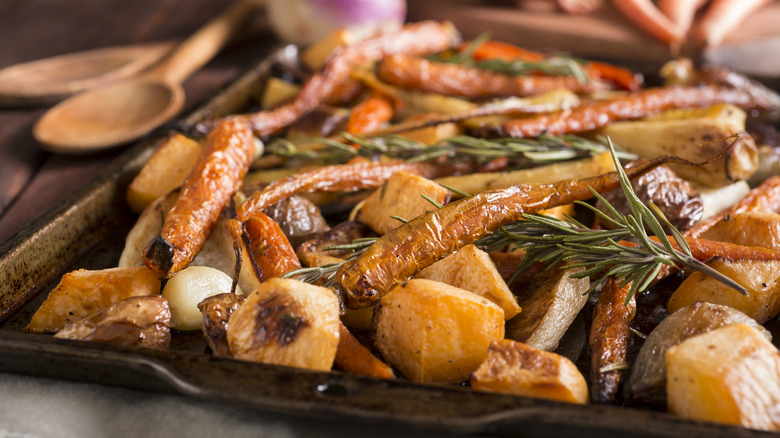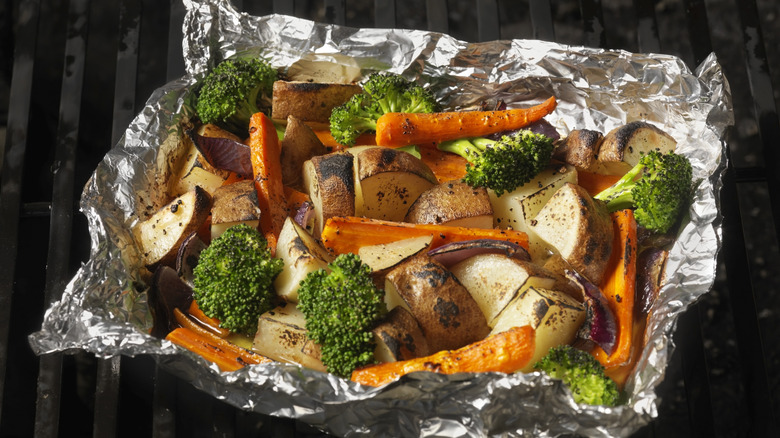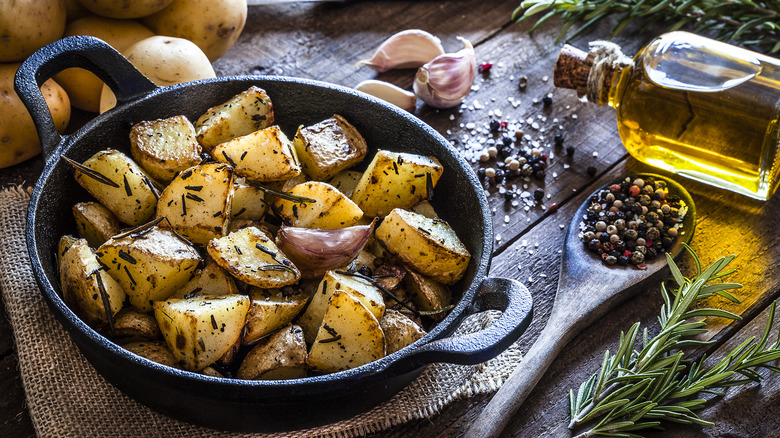Roasting Vegetables On Parchment Paper Is A Big Mistake
Whether contemplating side dishes for a salmon dinner or seeking a perfect offering for a potluck gathering, you can't go wrong with roasted vegetables. Flavorful, hearty, and packed with nutrients, roasted vegetables pair well with virtually every meal and aren't all that challenging to prepare. However, roasting veggies with the aid of parchment paper can negatively affect the quality of the finished dish.
Remember that the heat-resistant qualities of parchment paper can work against you in the kitchen. This material gets heat resistance from a special silicone coating applied to the paper to ensure it can withstand high temperatures. While these qualities are ideal for baking, they're not so good for roasting foods. The application of heat causes chemical reactions in food that make it unbelievably tasty and appealing (also known as browning). When you place a layer of parchment paper on the bottom of baking sheets, it serves as an obstacle between the heat of the baking surface and the food that you're roasting.
Can you use aluminum foil instead?
Much like parchment paper, aluminum foil's resistance to heat can impede the process of roasting vegetables. While the material won't pose any safety issues when it's used correctly, meaning that the aluminum foil is placed on a baking sheet rather than directly on oven components, it may also result in lackluster roasted vegetables. That's because aluminum foil will limit the amount of heat directed at the vegetables, which will prevent them from browning nicely.
In many cases, placing veggies like carrots and potatoes directly onto a baking sheet will garner better results than lining the sheet with parchment paper or aluminum foil. These materials benefit home chefs when it comes to cleaning up afterward, but this benefit comes with a price if you're roasting vegetables in your oven. On the other hand, in certain situations not using parchment paper or aluminum foil is one of many common baking sheet mistakes to avoid.
Best practices for perfectly roasted vegetables
When arranging vegetables on a baking sheet for roasting, the size of the sheet can make a huge difference. Larger sheets are preferred to ensure the vegetables aren't touching, as this can generate steam. Steam will prevent the firm, toothsome texture you desire, so use a sheet that's big enough to give them some breathing room (or roast the vegetables in batches if you only have access to a smaller piece of cookware).
When cutting your vegetables for the oven, remember that size matters. Each piece should be approximately an inch and all the veggies should be roughly the same size to guarantee they roast evenly. Additionally, there's a secret ingredient to achieve crisp roasted vegetables, and that ingredient is cornstarch. Cornstarch won't add any unwanted flavor to the veggies, and it will also draw out some of their moisture, which is key when it comes to crispiness. Thanks to these great tips, roasted vegetables are sure to become a go-to option in your meal-planning arsenal.


